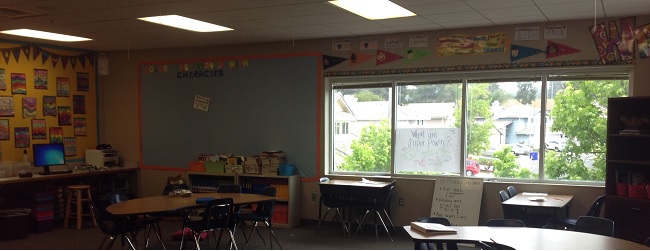Technology giant Fujitsu has launched its eighth Innovation Hub, with The Telford Park School becoming the latest member of the Fujitsu-Intel Ambassador Programme. The Stirchley-based school was selected due to its commitment to stand out as a new species of school, ultimately equipping their students with the right skills for what comes after education.
Innovation is something we’re beginning to see much more of in the modern classroom. In fact, 84% of schools today report collaboration with other local establishments - a relatively new concept - while around 50% of schools have started to offer their pupils extended learning hours. For the first time, ‘the norm’ is changing, and schools are being encouraged to continue introducing more innovative activities, lesson plans, and teaching techniques into the classroom in an effort to shake things up a bit. It is hoped that innovation could be the key to improving overall performance.
In the not-so-distant past I found myself sitting sleepily in 9th grade Spanish class; my head on my hand, staring out the window wishing for a fire drill, a tornado or perhaps the zombie apocalypse - though a quick glance around the room might have confirmed that the latter had already come to pass.
A Turkish student is leading her school’s mission for innovation with her amazing, magnetic shoelace-tying device. According to Anadolu Agency, eighteen-year-old Istanbul student Zuleyha Cakir has teamed up with four friends as part of Darüşşafaka High School’s technology and science project.
Different teachers have different ideas when it comes to innovation in education. Here, The Learning Machine’s Ian Lynch explains why he feels schools need to be careful not to get carried away with technology.

To some, education is a machine. To others, it’s more akin to a biological ecosystem. Here, FE English teacher and MSc supervisor Dr Carol Webb explains how, to her, education is an ever-adapting, wildly varied ecological environment.

Why are frogs so happy? Because they eat what bugs them. Haha. Good one. What bugs you about education? Make a list. Yes, you. Do it, now. Then just eat it. Figuratively speaking. How? By engaging in pond life thinking perhaps, that's how.
After Rory Gallagher’s recent piece on the meaning of education-innovation, Nicole Ponsford looks at the current state of affairs between schools and suppliers, and how both parties can work together for exciting progress.

With a background in marketing preceding my time in schools, I find this question of great interest. Schools and business are in the marketing game – schools to illustrate and celebrate the hard work and success of students and teachers alike, businesses to illustrate how innovative they also are, and to make a profit. As a former multimedia teacher, I have always been keen to provide my secondary school students with ‘industry-standard’ software and hardware. I want to prepare them for the world of business. However, working with technological giants like Apple, Sony and Vodafone, I have learnt a little about who is leading this innovation in terms of produce use – teachers or suppliers? Who is making the first move, and is this more about products or partnership?
What is innovation, exactly? Teacher of French and Japanese Rory Gallagher discusses how teachers and companies affect education-innovation.

We are already 14 years into the 21st century, and most of us are just catching up with existing technology – like the internet, social media, touchscreens, digital files etc. We are starting to discover the applications of these inventions in our lives, and realising which are the important innovations, which are simply gimmicks, and which are merely improvements on existing systems. But have our values really changed? In this post I will attempt to provoke and challenge our conceptions of innovation, and I hope to raise more questions than I can answer.
How can you get the most out of your pupils? Do you make sure that their days are strictly regimented, in order to make sure a curriculum is thoroughly covered? Or do you, as Kriscia Cabral ponders, throw seating plans to the wind in order to give students a psychological boost?

I’ve had a number of conversations with my colleagues about no assigned seating in the classroom. I made some attempts around this idea last year; however, at the start of this year I decided to go full throttle. And I am so glad that I did. Allowing my students to come in every morning and have a choice is the first empowering decision they get to make in their day. Not only to do I no longer have the task of rearranging my seating on a monthly basis, I don’t have to waste valuable learning time with finding order in the classroom again.
At the beginning of the year I wrote a post for Scholastic discussing the design of my room. I talked briefly about the seating, but I’d love to highlight here how you can take small steps along this amazing journey to classroom seating freedom.

A community-driven platform for showcasing the latest innovations and voices in schools
Pioneer House
North Road
Ellesmere Port
CH65 1AD
United Kingdom